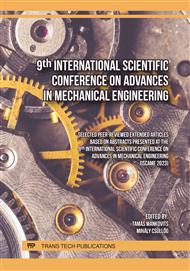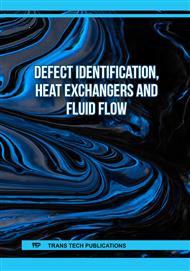[1]
J. Kim., R. Smierciak, Y.S. Shin, L. Cooper, Advances in Aluminum Mold Block for Plastic Injection Molding Operations. In: Weiland, H., Rollett, A.D., Cassada, W.A. (eds) ICAA13 Pittsburgh (2012)
DOI: 10.1007/978-3-319-48761-8_243
Google Scholar
[2]
C.-C. Kuo, X.-Y Pan, Development of a Rapid Tool for Metal Injection Molding Using Aluminum-Filled Epoxy Resins. Polymers 15 (2023) 3513. https://doi.org/10.3390/ polym15173513
DOI: 10.3390/polym15173513
Google Scholar
[3]
C.-C. Kuo, Y. J. Zhu, Y. Z. Wu, Development and application of a large injection mold with conformal cooling channels. Int J Adv Manuf Technol 103 (2019) 689–701
DOI: 10.1007/s00170-019-03614-4
Google Scholar
[4]
C.-C. Kuo, T.-D. Nguyen, Y.-J. Zhu, S.-X. Lin, Rapid Development of an Injection Mold with High Cooling Performance Using Molding Simulation and Rapid Tooling Technology. Micromachine 12 (2021) 311
DOI: 10.3390/mi12030311
Google Scholar
[5]
A. S. Struchtrup, D. Kvaktun, R. Schiffers, A holistic approach to part quality prediction in injection molding based on machine learning Advances in Polymer Processing 2020, Springer, Berlin/Heidelberg, Germany (2020) 137-149
DOI: 10.1007/978-3-662-60809-8_12
Google Scholar
[6]
R. D. Párizs, D. Török, T. Ageyeva, J. G. Kovács, Machine Learning in Injection Molding: An Industry 4.0 Method of Quality Prediction, Sensors, 22, (2022) 2704/1-2704/16
DOI: 10.3390/s22072704
Google Scholar
[7]
K.-C. Ke, M.-S. Huang, Quality classification of injection-molded components by using quality indices, grading, and machine learning, Polymers, 13(3), (2021) 353
DOI: 10.3390/polym13030353
Google Scholar
[8]
J.-Y. Chen, J.-X. Zhuang, M.-S. Huang, Enhancing the quality stability of injection molded parts by adjusting V/P switchover point and holding pressure, Polymer, 213, (2021) 123332
DOI: 10.1016/j.polymer.2020.123332
Google Scholar
[9]
C.-W. Su, W.-J. Su, F.-J. Cheng, G.-Y. Liou, S.-J. Hwang, H.-S. Peng, H.-Y. Chu, Optimization process parameters and adaptive quality monitoring injection molding process for materials with different viscosity, Polymer Testing, 109, (2022) 107526
DOI: 10.1016/j.polymertesting.2022.107526
Google Scholar
[10]
Sz. Krizsma, A Suplicz, Comprehensive in-mould state monitoring of Material Jetting additively manufactured and machined aluminium injection moulds, Journal of Manufacturing Processes, 84, pp.1298-1309, 2022
DOI: 10.1016/j.jmapro.2022.10.070
Google Scholar
[11]
Sz. G. Krizsma, N. K. Kovács, J. G. Kovács, A. Suplicz, In-situ monitoring of deformation in rapid prototyped injection molds, Additive Manufacturing, 42, (2021) 102001/1-102001/8
DOI: 10.1016/j.addma.2021.102001
Google Scholar
[12]
J.G. Kovács, F. Szabó, N.K. Kovács, A. Suplicz, B. Zink, T. Tábi, H. Hargitai, Thermal simulations and measurements for rapid tool inserts in injection molding applications, Applied Thermal Engineering, 85(25), (2015) pp.44-51 https://doi.org/10.1016/j.applthermaleng. 2015.03.075
DOI: 10.1016/j.applthermaleng.2015.03.075
Google Scholar
[13]
B. Zink, F. Szabó, I. Hatos, A. Suplicz, N. K. Kovács, H. Hargitai, T. Tábi, J. G. Kovács, Enhanced Injection Molding Simulation of Advanced Injection Molds. Polymers, 9 (2017) 77
DOI: 10.3390/polym9020077
Google Scholar



